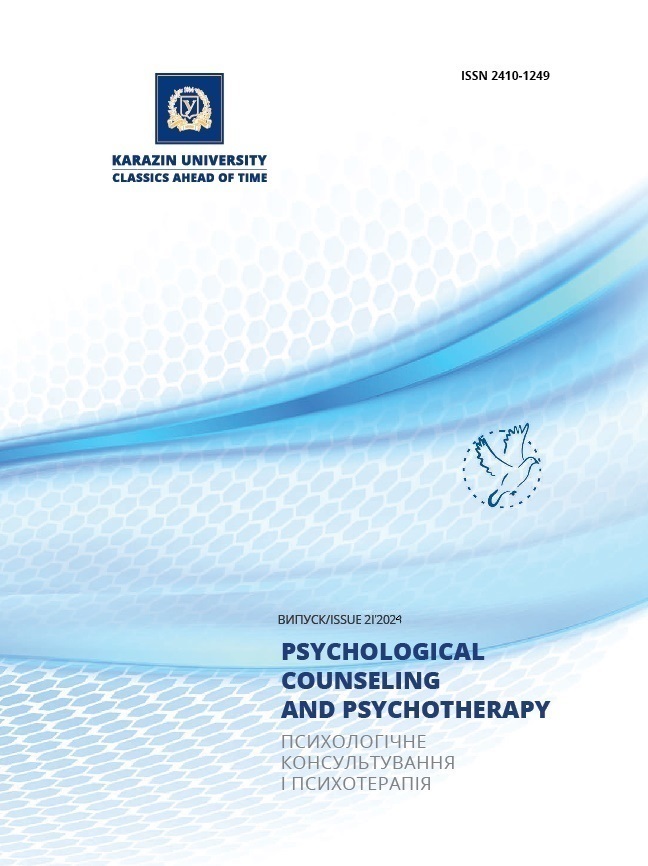Functional and Structural Features of Organizing the "Sense of Rightness" within the Structure of Personality
Abstract
The article investigates the problem of organizing the "sense of rightness" in the structure of personality in the context of modern challenges, particularly the war in Ukraine, which has led to deteriorating psychological health, increased stress levels, and the emergence of various psychological symptoms. The authors emphasize the importance of internal harmony and authenticity of personality in the conditions of an increasing pace of life and informational influence. The concept of Carl Rogers' "organismic tendency," which focuses on the internal sense of rightness supported by a therapeutic environment, is examined. Approaches of other theorists, such as Leslie Greenberg, Robert Elliott, Erik Erikson, Lawrence Kohlberg, and Viktor Frankl, regarding the formation and maintenance of the "sense of rightness" are also analyzed. The study highlights the necessity of new therapeutic methods to support psychological resilience and personality development under modern stress factors, particularly through emphasizing the integration of emotions, self-awareness, and the search for deep meaning in life and the sense of rightness.
Downloads
References
Kocharyan A.S. (2018). The course of the process in client-centred psychotherapy, Psychological counselling and psychotherapy, 9, 19.
Moskalets V. (2023). "Super-sense" in the logotherapy of grief and pangs of conscience, Scientific Notes of the National University of Ostroh Academy. Series "Psychology", 16, 73-83.
Frankl, V. (2016). Man in Search of True Meaning. A psychologist in a concentration camp. Kharkiv: UNISOFT.
Elliott R. (2003). Emotion-focused therapy, The tribes of the person-centered nation, P. Sanders (Ed.). (pp. 103-130). N.Y.
McWilliams (1994). Nancy Psychoanalytic diagnosis: Understanding personality structure in the clinical process. - New York: The Guilford Press.
Rogers, C. (1961). On Becoming a Person: A Therapist's View of Psychotherapy (pp. 184-187). Boston: Houghton Mifflin.
Rogers C.R. (1951). Client-Centered Therapy: Its Current Practice, Implications and Theory. London: Constable.
Rogers, C.R. (1967). On becoming a person: A therapist’s view of psychotherapy (pp. 185–186). Boston: Houghton Mifflin.
Sanford, R. (1983). The deeper self: A psychological exploration of spiritualities (pp. 165-178). New York: Paulist Press.
Warner M.S. (2013). Person-centered therapy at the difficult edge: a developmentally based model of fragile and dissociated process Person-centered therapy today (pp. 144-171). D. Mearns and B. Thorne (Ed.). London: Sage.








